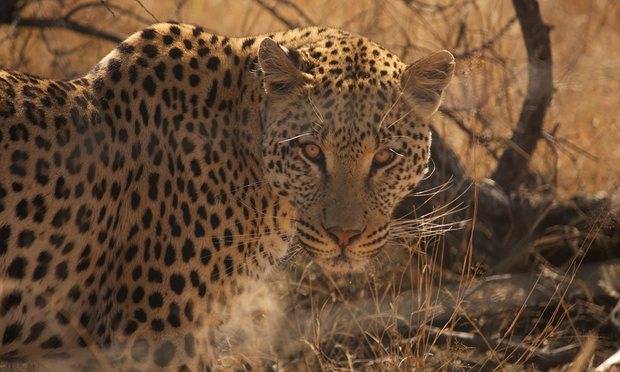
Canada Wildfires Have Grown 200,000 Acres, Thousands Evacuated

(Photo : Scott Olson/Getty Images)
Canadian wildfires have grown over 200,000 acres and many people have been forced to evacuate.
As the fire grew, many people were forced to go into evacuation. On Thursday, the Alberta government said there were more than 1,100 firefighters, 145 helicopters, 138 pieces of heavy equipment and 22 air tankers were sent to fight a total of 49 wildfires, with seven considered out of control.Currently, Candian officials help 8,000 people to airlift from Fort McMurray. The officials are hoping that the motorway to the south will be become safe by Friday so they can help move the remaining 17,000 people, according to BBC.
Luckily, there were no injured people reported. Is climate change the reason for more wildfires?
There are 1.9 billion hectares of boreal forest around the world, and Canada is home to 552 million hectares or 28 per cent of the world’s boreal zone according to Global News. Boreal forest is the largest terrestial biome, is also known as taiga or snow forest that consist mostly of pines, larches, and spruces. These forests are under threat by a climate change because of continues warming of temperature. Currently, boreal forests have already warmed by 0.5 C to 3 C. The continues rising of temperature linked to drier conditions.
According to the latest report of Intergovernmental Panel on Climate Change (IPCC), the area of boreal forest burned in North America has doubled over the past 20 years.
The three key ingredients to propagate wildfire weather conditions are hot weather, wind , and low humidity. A warming climate may produce two of the three ingredients. It could be warm air, which is usually associated with drier conditions. The wildfire could erupt if there is wind and a forest fire.
(Source : 09-06-2016 Nature World News http://www.natureworldnews.com/articles/ 21710/20160506/canada-wildfires-grown-200-000-acres-thousands-evacuated.htm)

‘Friends of the Planet’ campaign reaches final round
The ‘Friends of the Planet’ project launched by Double A with the Ministry of Education and the Central Environmental Authority has reached the final round.
|
|
The project aims to create awareness among secondary schoolchildren on the growing impact of climate change and encourage them to come up with fresh and creative solutions to help solve today’s problems.
Senior Executive Vice President, Double A, Thirawit Leetavorn said, “We were pleased with the overwhelming response we received. We believe in the power of our children. They have the capacity to understand solutions to big problems and even more crucially increase awareness of how imperative it is for everyone to join the effort to save the planet.”
“Students with fresh ideas and thirst for innovation are crucial stakeholders in a new way of life that will help save the planet. Judging from the success of this particular campaign, our belief in young minds was well founded,” the Senior Executive Vice President said.
In line with the campaign guidelines, each school selected a team of five students, above 15, to find a cost-effective and ground-breaking solution to an environmental problem. Each team developed and implemented a project within three months under the guidance of a teacher. On completing the project, each team compiled a detailed report which was presented to the panel of judges from Double A for evaluation.
The panel selected twenty-five team projects which move to the next level. The projects were evaluated by a panel comprising representatives from the Ministry of Education, the Central Environmental Authority and Double A, who shortlisted the seven most relevant and successful projects.
These seven projects qualified for the final round of the ‘Friends of the Planet’ program.
The top projects are from: Ibbagamuwa Central College,Viharamahadevi Girls’ College, Kiribathgoda, D.S. Senanayake Central College, Mirigama, Mayurapada Central College, Narammala, Pallivasathurai Maha Vidyalaya, Royal College, Polonnaruwa and Vincent Girls’ High School, Batticaloa.
The winning team will be presented tabs and an all-expenses-paid trip to Thailand where the team members will see an award-winning sustainability project carried out by Double A. The ‘Paper from Khan-na’ project is a landmark effort to make optimum use of agricultural land. It provides an additional source of income to Thai farmers and helps resolve environmental issues in Thailand.
The first and second runners-up will receive tabs and certificates.
(Source 08-05-2016 Sunday Observer-Sri Lanka )

New laws soon for sustainable development
Sri Lanka will soon introduce a new law on sustainable development which will help move the country towards more innovation and future-orientated thinking to inspire better buildings and businesses, Deputy Foreign Minister Dr. Harsha de Silva said.
The new law will come into effect with the launch of the proposed Development Agency. With the introduction of this new law Sri Lanka will become one of the first countries in Asia to legislate sustainable development, Dr. de Silva told Sunday Observer Business.
It is now at the last stage of vetting in the legal draughtsman’s office. “I personally got involved in writing the new law and worked closely with the Attorney General’s department. We wanted to incorporate the objectives of the sustainable development goals.
“What that means is environment and sustainability becomes something that gets incorporated in the body of the text rather than in an appendix. Therefore, green technology is going to be very important in the decisions we make in particular in the megapolis and other urban development projects in Sri Lanka. Clean technology and sustainable development together will help create good and quality jobs which are a major necessity in our country,” Dr. de Silva said. Currently there is no such law or policy in Sri Lanka.
“This move will encourage foreign investments as the investors are assured of a proper monitoring and coordinating body,” he said.
The government is in the process of setting up two key agencies – the Agency for Development and the International Trade Agency.
An International Trade Agency will be set up, with representation of the Foreign Ministry and Export Development Board, and the Department of Commerce.
Sustainable development has become necessary for all economic policymakers and stakeholders at the national and international levels to incorporate the concept of sustainability into their development strategies.

(Green technology – is important in the decisions we make in particular on the megapolis and other urban development project)
In Sri Lanka there are about 87different approvals to be taken from various different organizations prior to launching development projects.
The agency will coordinate and make sure that each individual agency has a plan for their institution.
If it is the Water Board or the Transport Board — whatever it is, we want to ensure they have followed the sustainability laws in their key performance indicators. It will be a monitoring process of sustainable development of the country and responsibilities are entrusted to every organization and investment project.
Parliament has power in ensuring that every investment project is green and sustainable.
(Source 08-05-2016 Sunday Observer-Sri Lanka )

Leopards have lost 75% of their historical habitat
New research shows the big cats’ global range has shrunk by a shocking amount over the last 250 years.
(Photograph: Joseph Lemeris Jr/ZSL)
The area of the world roamed by leopards has declined by three-quarters over the last two and a half centuries, according to the most comprehensive effort yet to map the big cat.
Researchers said they were shocked by the shrinking of the spotted hunter’s range, and that the decline had been far worse for several of the nine subspecies of leopards and in some parts of the world.
“We found the leopard had lost 75% of its historical habitat, we were blown away by that, it was much more than we feared,” said Andrew Jacobson, a conservationist at the Zoological Society of London and lead author of a new study on their range published in the journal PeerJ.
“Our goal has to be to raise consciousness about the plight of the leopard, it’s been flying under the conservation radar for a while. We hoped to raise its profile and say ‘this cat needs your attention’.”
The new work is the first known attempt to draw up a global, historical map of the leopard. Jacobson and researchers found that in 1750 it occupied a vast 35m sq km (13.5m sq mile) area throughout Africa, the Middle East and Asia. But after centuries of habitat loss and hunting caused by humans, that area shrank to just 8.5m sq km.
Leopards in Asia have been particularly badly hit, with six regions losing over 95% of habitat where the species has been, in Jacobson’s view, “almost completely wiped out”.
There appeared to be a clear link between Asia’s economic development and the leopard’s decline there, he said. “South-east Asia and China have been developed for a long period of time and that’s seriously constricted habitat in that area for decades. We worry this will be the trend we will see in Africa in coming decades, as economies grow.”
Even in Africa, the paper found, losses varied greatly, with their range decreasing 99% in North Africa, up to 95% in West Africa but only up to 51% in Southern Africa.
Leopards are a famously reclusive but adaptable species, living nocturnally and hunting a wider variety of prey than other species. They also appear more capable than other big cats at adapting to environments transformed by humans, with leopards living in the outskirts of Mumbai and Johannesburg.
There are no reliable population estimates but it is thought there are over a 100,000 left in Africa and perhaps fewer than 10,000 in Asia.
Jacobson, who is also part of theNational Geographic Society’s Big Cats Initiative, said it was not too late for leopards to bounce back. “I think the leopard can come back. The leopard is an incredibly adaptable animal, we just need to ease off on the hunting pressure, the persecution. They’re cats, they breed pretty well.”
But greater conservation efforts were needed to stop them suffering the dramatic declines seen by some other species, he said. “When people think of endangered animals they think of tigers, elephants, rhino. Thankfully the leopard isn’t in that category yet, and if we are more proactive about them we can stop them being in there.”
The new study – Leopard (Panthera pardus) status, distribution, and the research efforts across its range – examined 6,000 records at 2,500 locations, from over 1,300 sources, including other scientific literature and experts’ data, to draw up a detailed reconstruction of leopards’ range today and in 1750.
(Source : 09-05-2016 The Guardian http://www.theguardian.com/environment/2016/may/ 04/leopards-have-lost-75-percent-of-historical-habitat)





